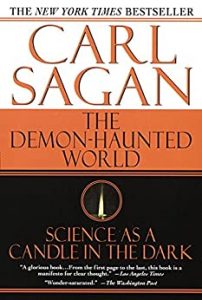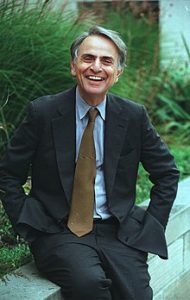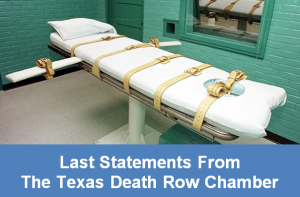 When it comes to capital punishment, the State of Texas leads the execution pack. Texas has the highest death row inmate count in the US and carries out the most lethal injections in the country. The Texas Department of Criminal Justice (TDCJ) administers their state’s death sentence mandate and maintains an informative website with transparent statistics. Part of the TDCJ site are last statement quotes from the condemned after they’re strapped to the gurney and wait to die from a needle.
When it comes to capital punishment, the State of Texas leads the execution pack. Texas has the highest death row inmate count in the US and carries out the most lethal injections in the country. The Texas Department of Criminal Justice (TDCJ) administers their state’s death sentence mandate and maintains an informative website with transparent statistics. Part of the TDCJ site are last statement quotes from the condemned after they’re strapped to the gurney and wait to die from a needle.
It sounds macabre (or downright weird) to spend the afternoon paging through the TDCJ Death Row site and reading last words of people about to die. However, I found it fascinating how folks who were about to meet their maker thought. I’ll introduce you to some of these doomed inmates, tell you what they did, and let you read verbatim quotes as they were about to expire. But first, let me tell you what brought this on.
A few years ago, I had business in Austin, Texas and was on my way to the airport to fly back to Canada. There, along the side of Route 183, was this gigantic electronic billboard with information by the TDCJ of how many executions had been done since capital punishment was reinstated in 1974. It included the next scheduled date of a state-sanctioned killing.
 “Now there’s something you won’t see up in Canada.” I pointed at the sign and said to the taxi driver. “What?” The cabbie sounded puzzled. “Y’all don’t execute felons up there?” I shook my head. “No, but we probably should. I can think of a few names for the list.”
“Now there’s something you won’t see up in Canada.” I pointed at the sign and said to the taxi driver. “What?” The cabbie sounded puzzled. “Y’all don’t execute felons up there?” I shook my head. “No, but we probably should. I can think of a few names for the list.”
I never forgot this experience and, from time to time, I check in with the TDCJ Death Row website to see how they’re making out in the Lone Star State. I did that today, and I surfed the “Recent Executions” page and read some of the “Last Statements”. I thought it might make a good blog post that fits with my tagline “Provoking Thoughts on Life, Death, and Writing”. It also might trigger a few unsubscribers to my mailing list.
Here are a few felons who appeared in the Texas death row chamber – including what they did to get there and what they said going out.

Abel Revill Ochoa shot and killed his wife and two daughters, aged 7 years and 9 months. He also killed his parents-in-law in an unspeakable manor. Last Statement: “Yes sir. I would like to thank God, my dad, my Lord Jesus savior for saving me and changing my life. I want to thank you for forgiving me. Thank you, Warden.”
Michael Riley beat two defenseless women to death with a baseball bat and then performed necrophilia on their bloody corpses. Last Statement: “I’m ready. I told you years ago that I was ready. Synnova, tell everyone I got full on Chicken and Pork Chops. Rodney, take care of my mom. To the fellas on the row, stay strong. Renee, I love you baby. Fleetwood is up out of here. I’m ready, Warden.”
Larry Swearingen strangled a 19-year-old girl with a black electrical cord. Last Statement: “Lord forgive them. They don’t know what they are doing.”
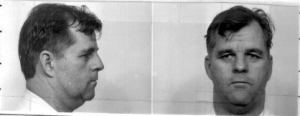 Billy Wayne Coble shot his estranged wife’s parents and brother dead, then stole their car and kidnapped his wife after tying their four kids to a bed. This ended in a wild car chase with the police where the getaway car was wrecked but the wife and Coble survived. Last Statement: “Yes Sir, that will be five Dollars. I love you, I love you, and I love you. Mike, I love you. Where’s Nelley at? I love you. That will be five dollars. Take Care.”
Billy Wayne Coble shot his estranged wife’s parents and brother dead, then stole their car and kidnapped his wife after tying their four kids to a bed. This ended in a wild car chase with the police where the getaway car was wrecked but the wife and Coble survived. Last Statement: “Yes Sir, that will be five Dollars. I love you, I love you, and I love you. Mike, I love you. Where’s Nelley at? I love you. That will be five dollars. Take Care.”
Robert Moreno Ramos murdered his wife and children, aged 3 and 4, by bludgeoning them with a blunt object. He hid the bodies under the floor and had a new woman move in three days later. When the smell started, she suspected something and called the police. Last Statement: “I am thankful for the humane treatment that I was given here at the 2 prisons that I was at. I am getting my gold watch that it took the Governor 30 years to forge. Thank you God, Lord send me a chariot. I’m ready.”
Juan Edward Costello cold-bloodedly shot a 19-year-old male during a robbery. Last Statement: “To everyone that has been there for me you know who you are. Love y’all. See y’all on the other side. That’s it.”
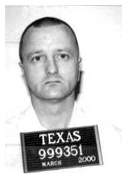 Troy Clark beat a woman, drowned her in a bathtub, and then dumped her body in a rural Texas ditch. She was found five months later. Last Statement: “I’m not the one that killed Christina, so whatever makes ya’ll happy. I love ya’ll. I’ll see you on the other side. Ya’ll be good. OK Warden, I’m ready.”
Troy Clark beat a woman, drowned her in a bathtub, and then dumped her body in a rural Texas ditch. She was found five months later. Last Statement: “I’m not the one that killed Christina, so whatever makes ya’ll happy. I love ya’ll. I’ll see you on the other side. Ya’ll be good. OK Warden, I’m ready.”
Erick Daniel Davila crashed a Houston birthday party and shot a mother and her five-year-old daughter. Last Statement: “Yes, I would like to say nephew it burns, huh. You know I might have lost the fight but I’m still a soldier. I still love you all. To my supporters and family y’all hold it down. Ten Toes down right. That’s all.”
Rosendo Rodriguez III sexually assaulted and killed a pregnant woman, cut her up and removed the fetus, then stashed the severed remains in a suitcase buried in a park. Last Statement: “The medical examiner and the chief nurse were engaged in numerous false illegal acts. They tried to cover up that thousands were wrongfully convicted by Matt Powell, district attorney. This needs to be brought to justice. I call upon the FBI to investigate Matt Powell and the Lubbock County Medical Examiner. Lastly, I was born and raised Catholic and it was not lost upon me that this is Holy Week and last Sunday was Palm Sunday. Yesterday was my birthday. Today is the day I join my God and father. The state may have my body but not my soul. In order to save my brothers on death row I call upon Pope Francis and all the people of the world. Lastly, I want everyone to boycott every single business in the state of Texas until all the businesses are pressed to stop the death penalty. With that Lord I commend my spirit. Warden, I am ready to join my father.”
William Rayford beat, strangled, and stabbed a woman to death then threw her body in a creek. The woman’s 11 and 14-year-old sons watched the crime. Last Statement: “First, I would like to praise my Lord Jesus Christ. I ask for forgiveness to the Thomas Family for my past choices I made. Carol did not deserve for what I’ve done. I’ve asked God to forgive me. Please find it in your hearts to forgive me. I’m sorry it has been bothering me for a long time. So I now pray and I will keep you all in my prayers. I hope you find it in your heart to forgive me. I’m sorry. To my supporters Daniel, brother Charlie, Steve and all who stood by me, thank you. By no means am I happy for what I’ve done. I have asked the Lord to forgive me. Please tell everyone I’m certain I left off some names. Tell the kids I’m sorry for being a disappointment. Thank you. God bless. I’m ready, Warden.”
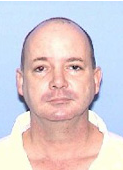 Anthony Allen Shore was a Texas serial killer who was caught for four sex-killings. Last Statement: “I will die with a clear conscience. I made my peace. There is no others. I would like to wish a Happy Birthday to Barbara Carrol, today is her birthday. God bless everybody until we meet again. I am ready, Warden.”
Anthony Allen Shore was a Texas serial killer who was caught for four sex-killings. Last Statement: “I will die with a clear conscience. I made my peace. There is no others. I would like to wish a Happy Birthday to Barbara Carrol, today is her birthday. God bless everybody until we meet again. I am ready, Warden.”
Ruben Ramirez Cardenas was convicted of kidnapping a 16-year-old girl from her bedroom and taking her by vehicle to a remote location where he raped and beat her to death. Last Statement: “I will not and cannot apologize for someone else’s crime, but, I will be back for justice! You can count on that!”
Robert Lynn Pruett was serving a life sentence for murder when he beat a correctional officer to death. Last Statement: “I’m ready to go but I’ll be back. Nighty night everybody, nighty night everybody. I’m done, Warden.”
Taichin Preyor stalked his ex-girlfriend, broke into her home, and fatally stabbed her. Last Statement: “I’d like to say, ‘Justice has never advanced by taking a life… by Coretta Scott King’. That’s it.”
Terry Edwards was a Texas career criminal who got the death sentence for shooting two clerks during a robbery. Last Statement: “I made peace with God. I hope y’all make peace with this.”
Barney Ronald Fuller got in a dispute with his neighbors, so he shot them. Last Statement: “I don’t have anything to say, you can proceed Warden Jones.”
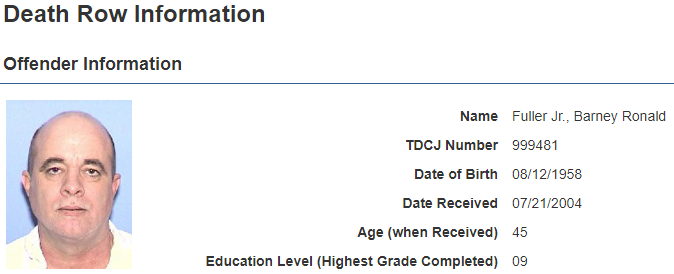
Coy Westbrook was paroled and invited to his ex-wife’s home. Drinking ensued and the ex disappeared with two men who Coy found her having sex with. He shot the ménage-a-trois as well as three other men at the house. Last Statement: “I have no bad sentiment towards anyone. I can understand your outrage and why you are mad at me.”
Richard Matheson killed a man for no other reason than to watch him die. Last Statement: “I am alright with this, you have to live and die by the choices that we make. I have made mine. I am ready.”
Raphael Holiday burned three kids to death in their Madison County home. Two were step-children and one was his own 1-year-old daughter. Last Statement: “Yes, I would like to thank all of my supporters and loved ones. I love you, love y’all, always going to be with y’all. Thank you, Warden.”
Licho Escamilla shot and killed a Texas cop. Last Statement: “From California to New York thank you for all of your support. Pope Francis, God’s children has asked the State of Texas to switch my death sentence to life in prison. But the State of Texas has refused to listen to God’s children, they will have to take that up with God. Let everyone know it’s not over. Keep your head up, keep your faith in God. That’s it, Warden.”
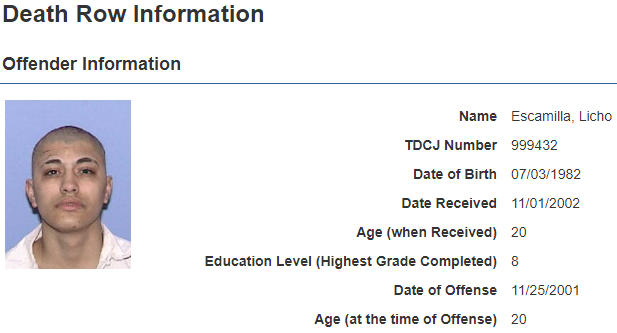
Lester Bower was a Texas hit-man for a Columbian drug cartel. He was convicted on multiple gangland murders. Last Statement: “Much has been written about my case, not all of it has been the truth. But the time is over and now it is time to move on. I want to thank my attorneys for all that they have done. The have afforded me the last quarter of a century. I would like to thank my wife, my daughters, family and friends for unwavering support, and all of the letters and well wishes over the years. Now it is time to pass on. I have fought the good fight, I held the faith. I am not going to say goodbye. I will simply say until we meet again. Thank you, Warden.”
Charles Derrick broke into his ex-girlfriend’s place and strangled a man who was visiting her. He waited till the girlfriend and her mother arrived and he killed them, too. Last Statement: “I’m ready to go home.”
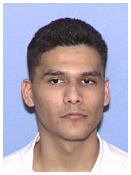 Manuel Garza shot a police officer with the officer’s own service handgun. Last Statement: “Thank you for being here. I am sorry for all of the pain that I have caused my family, friends, and extended family. Especially to the Police Officers, I know you probably hate me. What happened between me and Rocky happened too fast. I didn’t know what happened. I wish y’all peace and love. I hope you have found God just like I have. God bless y’all. I will see you on the other side. I love you.”
Manuel Garza shot a police officer with the officer’s own service handgun. Last Statement: “Thank you for being here. I am sorry for all of the pain that I have caused my family, friends, and extended family. Especially to the Police Officers, I know you probably hate me. What happened between me and Rocky happened too fast. I didn’t know what happened. I wish y’all peace and love. I hope you have found God just like I have. God bless y’all. I will see you on the other side. I love you.”
Donald Newbury escaped from prison where he was serving firearms and robbery convictions. Newbury shot a police officer who responded to another hold-up Newbury was pulling. Last Statement: “Each new indignity defeats only the body… pampering the spirit with obscure merit. That’s it.”
Robert Ladd robbed and hammer-murdered a 39-year-old woman while he was out on mandatory supervision by the TDCJ. Last Statement: “A revenge death won’t get you anything. Let’s ride.”
Cleve Foster sexually assaulted and shot a 28-year-old-woman. He dumped her body in a drainage ditch where pipe-layers found it months later. Last Statement: “Warden, I am looking to leave this place on wings of a homesick angel. Ready to go home to meet my maker.”
Cary D. Kerr was convicted by a Texas jury for raping a woman and throwing her out of a moving vehicle that caused her death. Last Statement: “I am an innocent man. Never trust a court-appointed attorney. I am ready, Warden. Check that DNA, check Scott. Here we go. Lord Jesus, Jesus.”
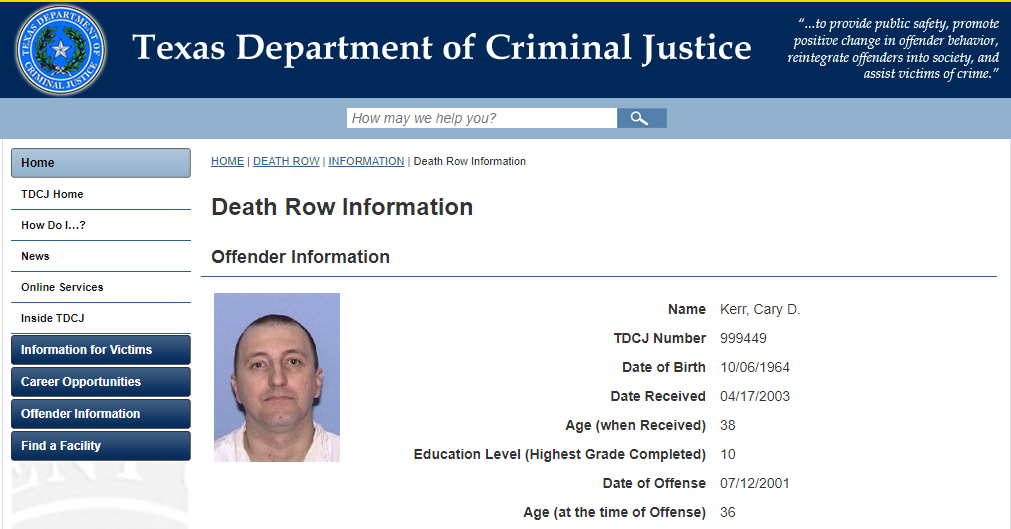
Roy Pippin maintained his innocence till the end. A Texas jury convicted Pippin of multiple murders to cover his company financial embezzlement. Last Statement: “Yes sir, I charge the people of the jury. Trial Judge, the Prosecutor that cheated to get this conviction. I charge each and every one of you with the murder of an innocent man. All the way to the CCA, Federal Court, 5th Circuit, and Supreme Court. You will answer to your Maker when God has found out that you executed an innocent man. May God have mercy on you. If my murder makes it easier for everyone else let the forgiveness please be a part of the healing. Go ahead Warden, murder me.”
Douglas Roberts kidnapped, robbed, and murdered a man in San Antonio then ran over him with a car to crush the evidence before phoning the police to report a dead body. Last Statement: “Yes sir, Warden. Okay, I’ve been hanging around this popsicle stand way too long. Before I leave, I want to tell you all. When I die, bury me deep, lay two speakers at my feet, put some headphones on my head and rock and roll me when I’m dead. I’ll see you in Heaven someday. That’s all, Warden.”
Suzanne Basso was a nasty piece of work. She sucked a mentally-handicapped man into a marriage proposal and took a life insurance policy on him. Then, she beat him to death with a belt, a bat, steel-toed boots, and her bare hands. Last Statement: *Quote from TDCJ – This offender declined to make a last statement.*

 Interrogation. Just the word elicits your vision of forcible confinement in a hot and windowless room, shoved in a wooden chair with one leg shorter than others, a bright light from a bare bulb burning over your head, and hulking forms of trench-coated detectives firing hardboiled questions in your face. The truth is different. A lot different. There’s a high skill involved in getting useful information from people, and not everyone is cut out for the job. Are you? Would you be a good police interrogator?
Interrogation. Just the word elicits your vision of forcible confinement in a hot and windowless room, shoved in a wooden chair with one leg shorter than others, a bright light from a bare bulb burning over your head, and hulking forms of trench-coated detectives firing hardboiled questions in your face. The truth is different. A lot different. There’s a high skill involved in getting useful information from people, and not everyone is cut out for the job. Are you? Would you be a good police interrogator?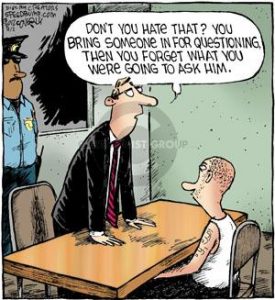 The higher the score – the better your listening skills tend to be and the better interrogator interviewer you would be. Note: This is not a scientific test and has not been validated or otherwise vetted. These opinions are those of Dr. O’Toole and do not represent the views of the FBI.
The higher the score – the better your listening skills tend to be and the better interrogator interviewer you would be. Note: This is not a scientific test and has not been validated or otherwise vetted. These opinions are those of Dr. O’Toole and do not represent the views of the FBI.












